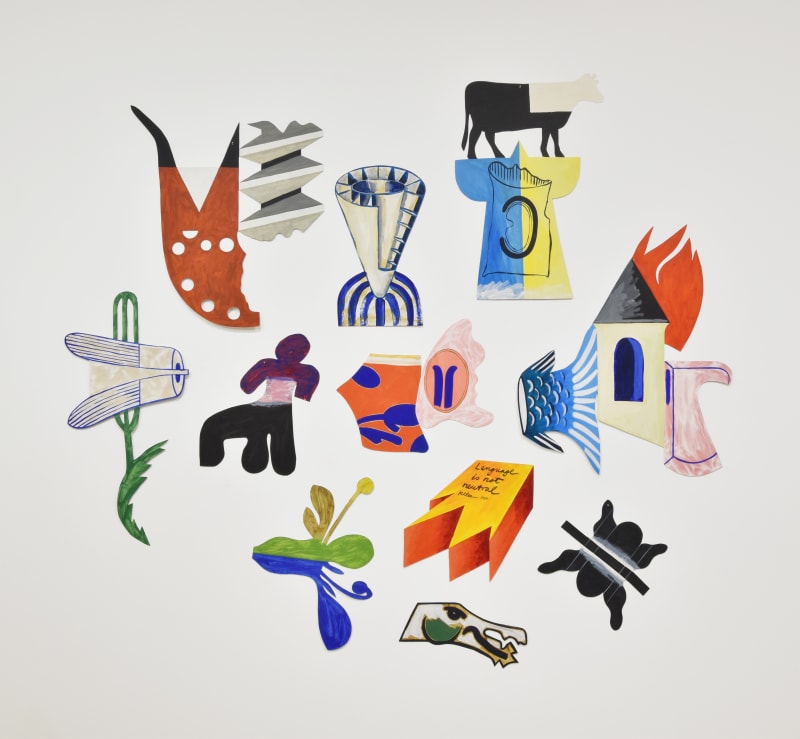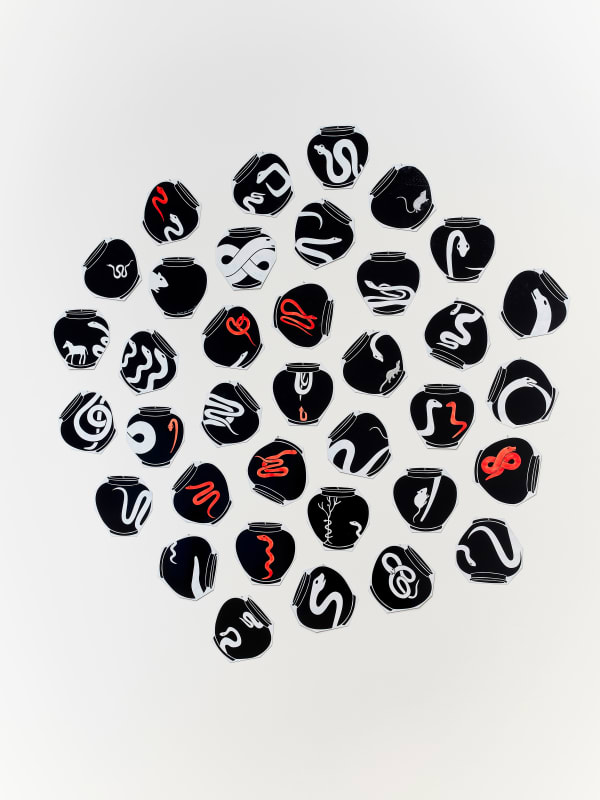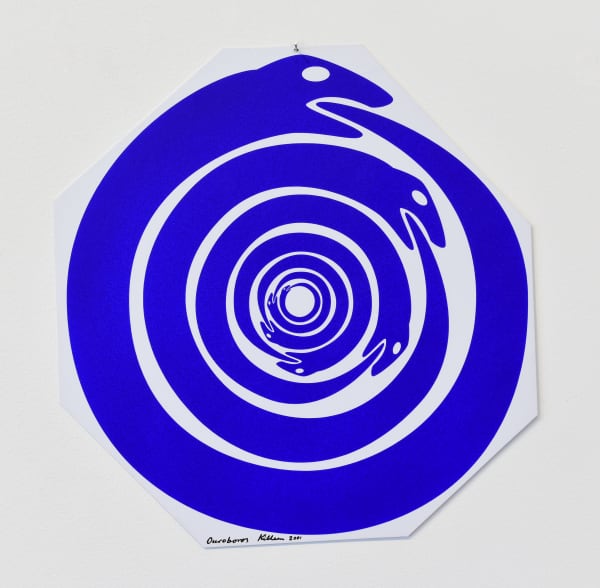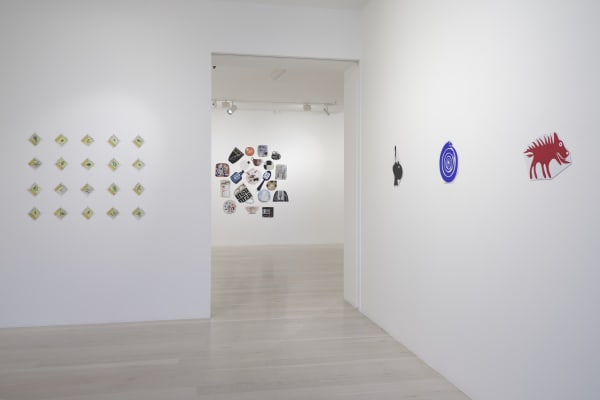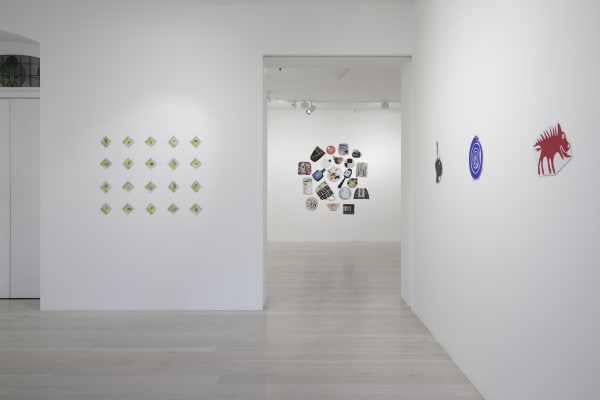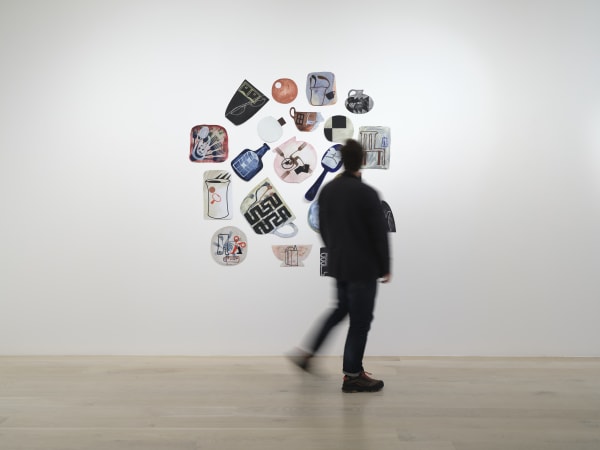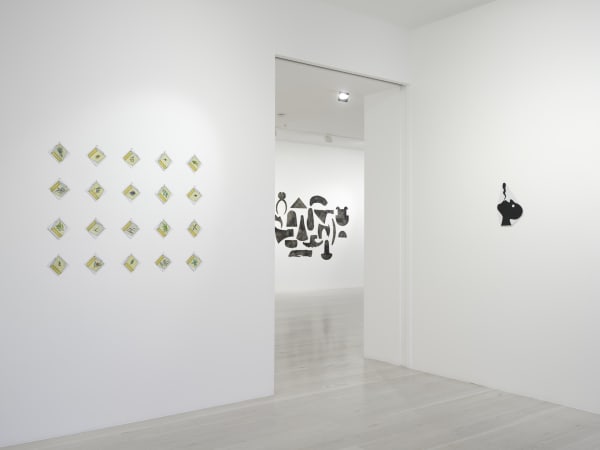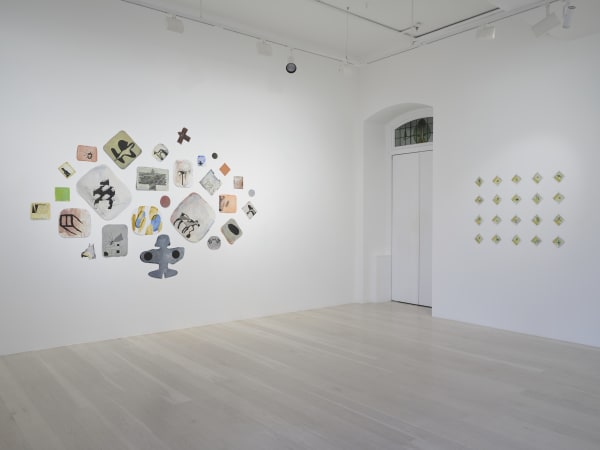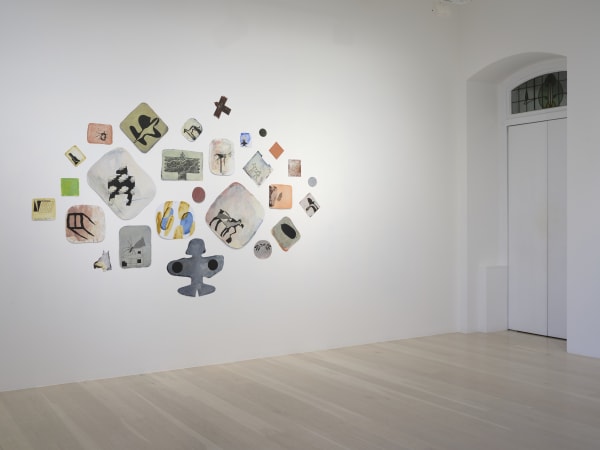Hang In Any Order: Richard Killeen
Hang In Any Order allows viewers to immerse themselves in Killeen’s dynamic and inventive art. From his earliest explorations in 1981 through to the first years of the 21st century, each piece expands and develops the scope of the cut-out.
Gow Langsford is pleased to present an exhibition of artworks by Richard Killeen. The exhibition includes several of Killeen’s distinctive cut-outs, which range in date from 1981 to 2002. Killeen’s cut-outs are among the most iconic and best-known examples of postmodern art practice in Aotearoa. Technically, these works break down distinctions between painting, drawing, sculpture, and installation. Similarly, their content defies taxonomic categories, bringing together portraits, symbolism, depictions of animals and flora, objects such as books and clothing, fragments of architecture and insects.
-
 Richard Killeen, The Language is not Neutral No. 2, 1984
Richard Killeen, The Language is not Neutral No. 2, 1984 -
 Richard Killeen, Snake Pot, 2002
Richard Killeen, Snake Pot, 2002 -
 Richard Killeen, Destruction of the Circle, 1990
Richard Killeen, Destruction of the Circle, 1990 -
 Richard Killeen, Smoke, 2001
Richard Killeen, Smoke, 2001 -
 Richard Killeen, Fire Dog, 2001
Richard Killeen, Fire Dog, 2001 -
 Richard Killeen, Still Life with James Joyce, 1994
Richard Killeen, Still Life with James Joyce, 1994 -
 Richard Killeen, Dead Black Deer, 1996
Richard Killeen, Dead Black Deer, 1996 -
 Richard Killeen, Ouroboros, 2001
Richard Killeen, Ouroboros, 2001 -
 Richard Killeen, Tools and Weapons, 1981
Richard Killeen, Tools and Weapons, 1981 -
 Richard Killeen, Know this place, 1993
Richard Killeen, Know this place, 1993 -
 Richard Killeen, Book of Leaf, 2002
Richard Killeen, Book of Leaf, 2002 -
 Richard Killeen, How may we learn?, 1992
Richard Killeen, How may we learn?, 1992
Gow Langsford is pleased to present an exhibition of artworks by Richard Killeen. The exhibition includes several of Killeen’s distinctive cut-outs, which range in date from 1981 to 2002. Killeen’s cut-outs are among the most iconic and best-known examples of postmodern art practice in Aotearoa. Technically, these works break down distinctions between painting, drawing, sculpture, and installation. Similarly, their content defies taxonomic categories, bringing together portraits, symbolism, depictions of animals and flora, objects such as books and clothing, fragments of architecture and insects.
In a 1997 essay, curator and writer Robert Leonard addressed these works of Killeen’s, stating, “Called ‘cutouts’, they were collections of decontextualised images, divorced from any obvious, overarching logic or sense of purpose.” [1] This, said Leonard, opened the works up to interpretation, allowing viewers to engage in free association. “Killeen said the cutouts were ‘democratic’, implying two things: firstly, that their compositions were non-hierarchical: the images they contained were created equal; secondly, that the format empowered viewers to make their own readings, denying any authoritative meaning emanating from the artist.” [2] These works are open to viewer interpretation, endlessly reconfigurable, and visually and conceptually malleable.
The works included in Hang In Any Order provide a detailed look at Killeen’s practice over a three-decade period, before his works became completely digitally made from 2003 onwards. From the monochrome silhouettes of Tools and Weapons (1981)to the painterly pops of colour in Destruction of the Circle (1990), this exhibition displays Killeen’s mastery in creating compelling paintings that are not confined to a traditional canvas. This is one of the defining aspects of these cut-outs—their ability to be configured differently when hung. From the making of his very first cut-outs in the late 1970s, Killeen prescribed installation instructions, which were written on each work’s own custom storage box. This is where this exhibition finds its name in step 3: Hang in any order. Killeen’s instructions emphasise the deconceptualized nature of his works and their ability to transcend premeditated compositional structures.
Hang In Any Order allows viewers to immerse themselves in Killeen’s dynamic and inventive art. From his earliest explorations in 1981 through to the first years of the 21st century, each piece expands and develops the scope of the cut-out. As Leonard noted, these cut-outs break down conventional artistic boundaries, and invite interpretation and dialogue. Hang In Any Order celebrates Killeen's contribution to postmodern art in Aotearoa and offers a compelling overview of his practice. In these works, boundaries blur and meanings multiply.
[1] Robert Leonard, Richard Killeen: Secret Handshake (https://robertleonard.org/richard-killeen-secret-handshake/).
[2] Ibid.
